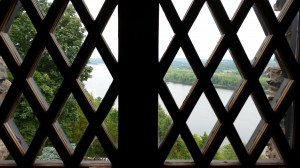Chapter 11 of The Great Connecticut Caper is here! That means only one more to go! It’s been a wild ride. In honor of the mystery (almost) being solved, the Connecticut Humanities is hosting an event at Gillette Castle on Sunday, June 7 from 2-4 pm. It’ll be a great opportunity to meet some of the authors and illustrators and to participate in some fun events (I heard there will be bookish type prizes!). In the meantime, today you can get know Sarah Albee, author of chapter 11, a little better. Welcome, Sarah!
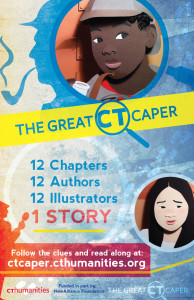 What was your approach to writing chapter 11 of The Great CT Caper? Given that it was the second-to-last chapter, how much did you feel you had to wrap up in order to set up the ending for the author of the final chapter?
What was your approach to writing chapter 11 of The Great CT Caper? Given that it was the second-to-last chapter, how much did you feel you had to wrap up in order to set up the ending for the author of the final chapter?
I actually worked pretty closely with Stacy DeKeyser, my fellow Caper author who was slated to write the final episode. Together we hatched a plan to wrap up the various plot threads and resolve the story in our two remaining installments. There was quite a bit of back-and-forth and she had some great ideas that I incorporated into my chapter. I think the combination of brain power was a great way to work!
What were your expectations coming into writing a collaborative, serialized story for young readers? Had you written anything like this before?
I have written books that include lots of chapter cliffhangers and that have very controlled word counts, but never in collaboration with other writers. It was fun, but challenging, because my predecessors have wonderfully wild imaginations and took the story onto some wild tangents. I was in the role of “batting cleanup,” and I enjoyed the challenge.
What kind of research did you do for the project?
I visited the Castle and took a whole lot of pictures, so I felt I had a good grounding with the setting.
The Great CT Caper’s target audience is children in grades four through seven. What were some of your favorite books when you were that age?
I loved books with magic in them, like the Narnia chronicles and Edward Eager’s books (Half Magic, Magic by the Lake, etc.). I also loved detective stories, and devoured Sherlock Holmes stories and Agatha Christie mysteries.
What’s the best writing advice you’ve ever received? What one piece of advice that you didn’t get but wished you had gotten?
I love Stephen King’s admonition in his book On Writing, where he says, “The road to hell is paved with adverbs.” In other words, write with simplicity and clarity.
The advice I wish I’d gotten? Ignore people who say “Write what you know.” I love finding stuff out. I love not knowing about something and learning about it. It’s the best part of being a nonfiction writer!
If you were stranded on a desert island and could only bring two books and one movie, what would you bring?
I’d bring the collected works of P.G. Wodehouse, the collected works of Shakespeare (is that cheating??), and a Pixar movie. Every one of them is ingenious, but I guess I’d say Monsters Inc. No, Toy Story. No, The Incredibles. Ok. Monsters Inc.
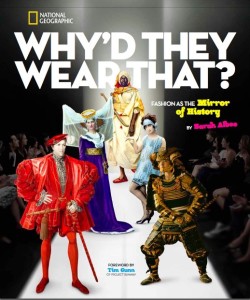 Where else can readers find your writings? What’s up next for your writing career?
Where else can readers find your writings? What’s up next for your writing career?
My latest book, which came out in February with National Geographic, is called Why’d They Wear That? Fashion as the Mirror of History. My next book, slated for 2017, is about poison in human history.
And finally, what is something funny/weird/exceptional about yourself that you don’t normally share with others in an interview?
After college, I lived for a year in Cairo, Egypt, where I played on a semi-professional women’s basketball team!
Sarah Albee is the New York Times bestselling author of more than 100 books for kids, ranging from preschool through middle grade. Her latest nonfiction middle grade title Why’d They Wear That? is about crazy fashions in history (National Geographic, 2015). She enjoys writing about topics where history and science connect, including Bugged: How Insects Changed History (2014) and Poop Happened: A History of the World from the Bottom Up (2010). When she isn’t writing books or visiting schools in person or via Skype, Sarah blogs about offbeat history at http://sarahalbeebooks.com.
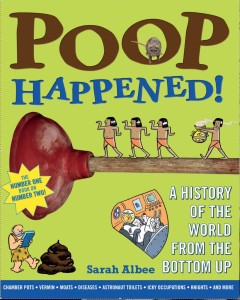

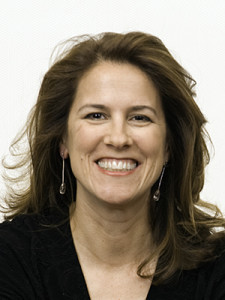
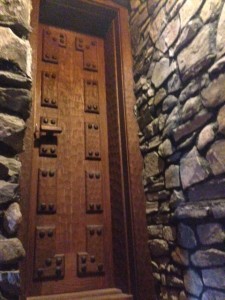
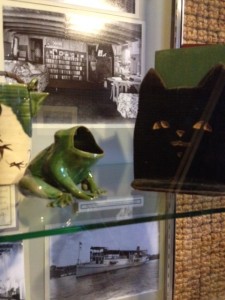
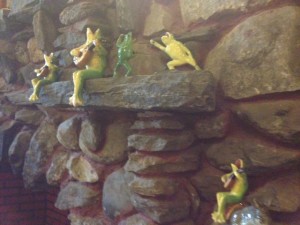 But here’s the problem with only using online research: it’s not always correct. My original draft of chapter five involved excitement when a dinosaur statue in the field at Dinosaur State Park came to life and started chasing Thomas and Norm. But I was unsure of two things: 1) it’s been a long time since my son, now 21, was obsessed with dinosaurs and I knew every single dinosaur ever, so I wanted to check I was using the correct name and 2) I was worried because there is also a Dinosaur State Park in Texas and some of the same pictures that were tagged as being in CT were also tagged as being in Texas.
But here’s the problem with only using online research: it’s not always correct. My original draft of chapter five involved excitement when a dinosaur statue in the field at Dinosaur State Park came to life and started chasing Thomas and Norm. But I was unsure of two things: 1) it’s been a long time since my son, now 21, was obsessed with dinosaurs and I knew every single dinosaur ever, so I wanted to check I was using the correct name and 2) I was worried because there is also a Dinosaur State Park in Texas and some of the same pictures that were tagged as being in CT were also tagged as being in Texas.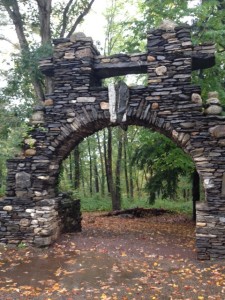 This is where being a journalist and understanding the importance of fact-checking helps me as a writer. I emailed Dinosaur State Park and explained my dilemma. I received an incredibly helpful email back from Meg Enkler, the Environmental Education Coordinator at Dinosaur State Park. Meg confirmed that the outside dinosaur statues must be at the Texas park, because the big statue of a Dilophosaurus, is indoors at Rocky Park. That nixed my existing plot line, but Meg helpfully suggested several alternatives, one of which I used. Thank you, Meg!
This is where being a journalist and understanding the importance of fact-checking helps me as a writer. I emailed Dinosaur State Park and explained my dilemma. I received an incredibly helpful email back from Meg Enkler, the Environmental Education Coordinator at Dinosaur State Park. Meg confirmed that the outside dinosaur statues must be at the Texas park, because the big statue of a Dilophosaurus, is indoors at Rocky Park. That nixed my existing plot line, but Meg helpfully suggested several alternatives, one of which I used. Thank you, Meg!
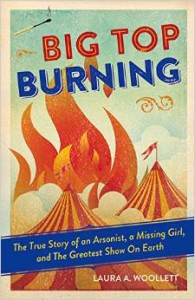 My first book,
My first book,  many carved wooden doors, each one unique. Fiction feels its most real when the sensory details are just right. Since our story would take place at this real location, it felt important for me to experience what Li-Ming and Thomas would first hand.
many carved wooden doors, each one unique. Fiction feels its most real when the sensory details are just right. Since our story would take place at this real location, it felt important for me to experience what Li-Ming and Thomas would first hand.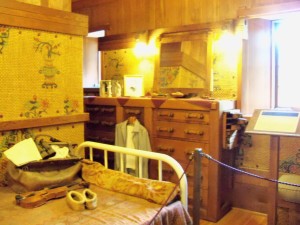 the plot. If the detail was not important to the scene, I cut it, even if it were true. Somewhere in Chapter 4, I took a bit of artistic license. Can you tell where?
the plot. If the detail was not important to the scene, I cut it, even if it were true. Somewhere in Chapter 4, I took a bit of artistic license. Can you tell where?
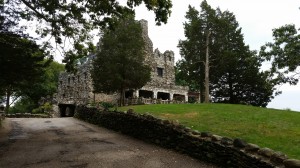
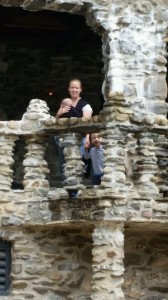 some research on William Gillette who designed and lived in the castle.
some research on William Gillette who designed and lived in the castle.